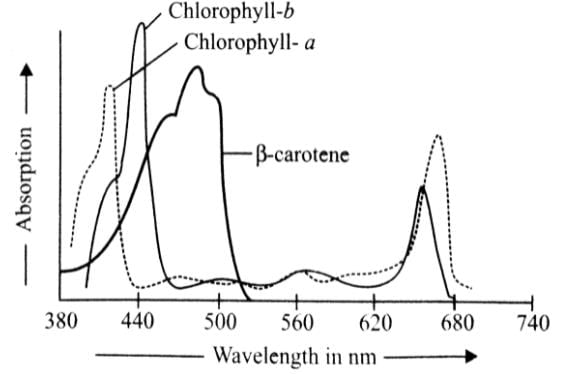Test: What is Photosynthesis? - Grade 9 MCQ
15 Questions MCQ Test - Test: What is Photosynthesis?
The synthesis of complex organic substances from simple inorganic raw materials in the presence of sunlight and chlorophyll is called ..........., which is a ............ process.
Visible part of electromagnetic spectrum consists of radiations having a wavelength in the range of
Which reaction in the Calvin cycle is catalysed by the enzyme RuBP carboxylase which results in the formation of two molecules of 3-PGA?
In purple sulphur bacterial photosynthesis, ________.
Which of the following statements are true about photosynthesis?
A. In this process, solar energy is converted into chemical energy.
B. In photosynthesis, CO2 and H2O are used.
C. In photosynthesis, CO2 is released and O2 is consumed.
D. In photosynthesis, O2 is released and carbon monoxide is consumed.
Which one of the following equations suggests that O2 released during photosynthesis comes from water?
In comparison to C3 cycle, the number of extra ATP molecules required in C4 cycle is
Who, after conducting experiments on purple and green sulfur bacteria, inferred that O2 evolved during photosynthesis comes from H2O not from CO2?
Which of the below statements is/are not correct regarding chlorophyll a molecule?
(i) Molecule formula of chl a is C55H72O5N4Mg
(ii) It is the primary photosynthetic pigment.
(iii) In the pure state, it is red in colour and thus it absorbs more blue wavelength of light than the red wavelength.
(iv) It is a soluble in water as well as petroleum ether.
Given graph represents the absorption spectra of three photosynthetic pigments, chl a chl b and β-carotene.

Select the correct statement regarding this.
Accessory photosynthetic pigments in most green plants are
If green plant cells are incubated with O18- labeled water, which of the following will become radioactive when the cells are exposed to light.























